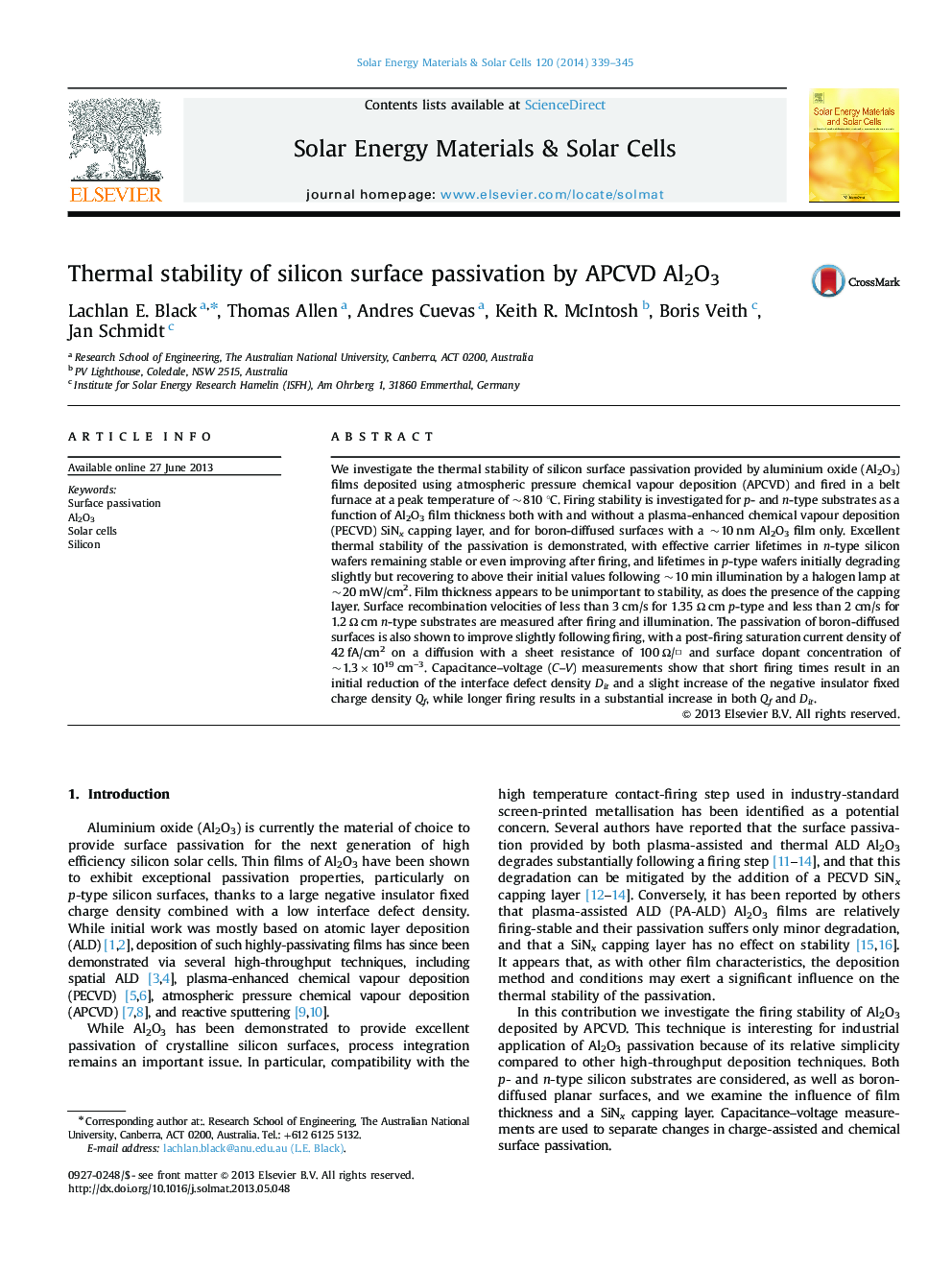| Article ID | Journal | Published Year | Pages | File Type |
|---|---|---|---|---|
| 10248750 | Solar Energy Materials and Solar Cells | 2014 | 7 Pages |
Abstract
We investigate the thermal stability of silicon surface passivation provided by aluminium oxide (Al2O3) films deposited using atmospheric pressure chemical vapour deposition (APCVD) and fired in a belt furnace at a peak temperature of ~810 °C. Firing stability is investigated for p- and n-type substrates as a function of Al2O3 film thickness both with and without a plasma-enhanced chemical vapour deposition (PECVD) SiNx capping layer, and for boron-diffused surfaces with a ~10 nm Al2O3 film only. Excellent thermal stability of the passivation is demonstrated, with effective carrier lifetimes in n-type silicon wafers remaining stable or even improving after firing, and lifetimes in p-type wafers initially degrading slightly but recovering to above their initial values following ~10 min illumination by a halogen lamp at ~20 mW/cm2. Film thickness appears to be unimportant to stability, as does the presence of the capping layer. Surface recombination velocities of less than 3 cm/s for 1.35 Ω cm p-type and less than 2 cm/s for 1.2 Ω cm n-type substrates are measured after firing and illumination. The passivation of boron-diffused surfaces is also shown to improve slightly following firing, with a post-firing saturation current density of 42 fA/cm2 on a diffusion with a sheet resistance of 100 Ω/â¡ and surface dopant concentration of ~1.3Ã1019 cmâ3. Capacitance-voltage (C-V) measurements show that short firing times result in an initial reduction of the interface defect density Dit and a slight increase of the negative insulator fixed charge density Qf, while longer firing results in a substantial increase in both Qf and Dit.
Related Topics
Physical Sciences and Engineering
Chemical Engineering
Catalysis
Authors
Lachlan E. Black, Thomas Allen, Andres Cuevas, Keith R. McIntosh, Boris Veith, Jan Schmidt,
